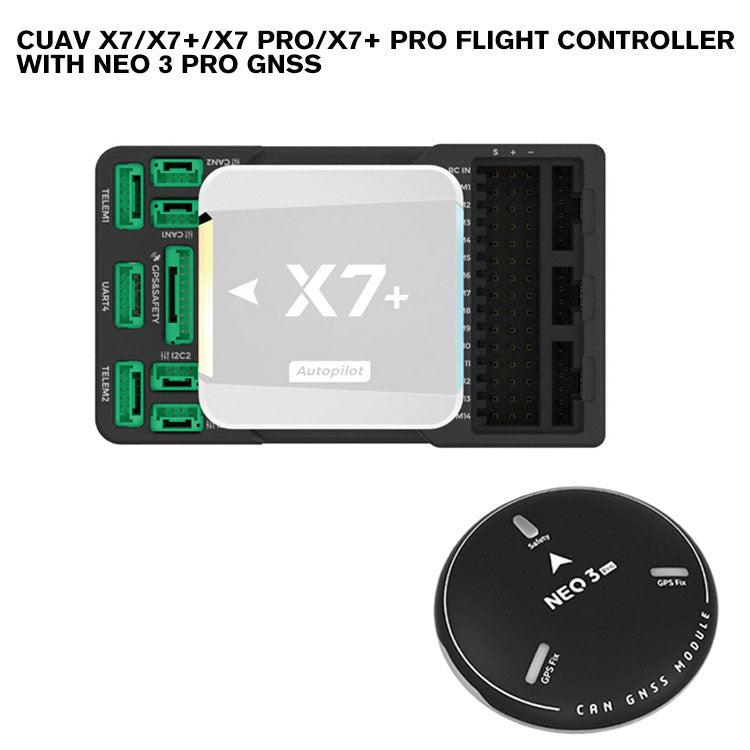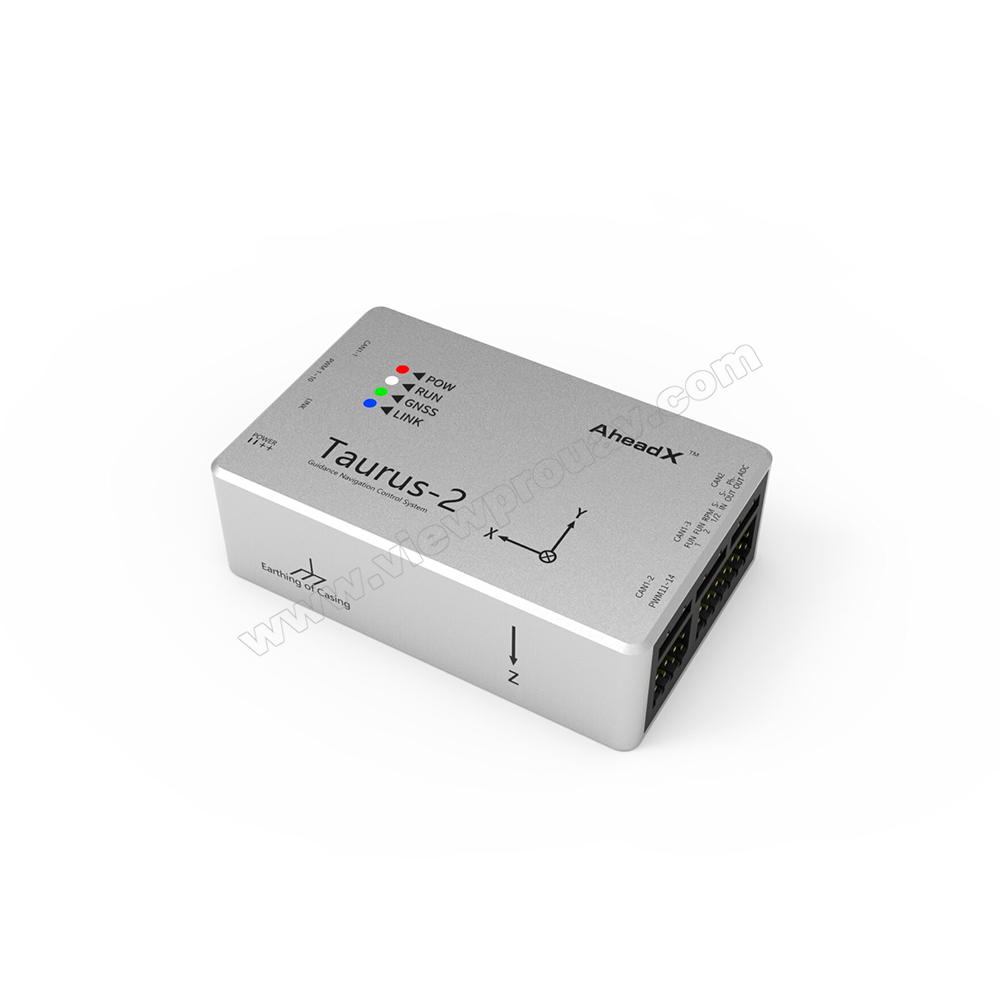The Potential of UAVs: SparkNavi Drone Flight Controller and GNSS/INS Made in Taiwan
The Potential of UAVs: SparkNavi Drone Flight Controller and GNSS/INS Made in Taiwan
Blog Article
Discovering the Function of Drone Flight Controllers in Enhancing Trip Security and Navigating Efficiency
The improvement of drone technology has actually dramatically boosted the significance of trip controllers, which offer as the mind of these airborne vehicles. By incorporating real-time information from a range of sensors, trip controllers enhance flight stability and navigating efficiency, making certain that drones can operate efficiently also in complex settings. This conversation will certainly check out the key parts that contribute to these improvements, along with the ramifications for the future of self-governing trip. What advancements lie in advance that could better transform the capabilities of drone trip controllers?

Understanding Trip Controllers
Flight controllers are integral components in the functioning of drones, functioning as the brains that stabilize and handle flight operations. These innovative tools procedure data from numerous sensing units, consisting of accelerometers, gyroscopes, and GPS, to make sure that the drone keeps its desired trip course. The flight controller analyzes this data and carries out commands based upon pre-defined formulas, allowing the drone to reply to ecological modifications, such as wind or barriers.
The main function of a flight controller is to preserve stability throughout flight. It attains this by making real-time modifications to the drone's motors and control surface areas, making certain equilibrium and control. In addition, contemporary flight controllers incorporate sophisticated functions such as waypoint navigating, permitting automated flight paths and enhanced functional effectiveness.
Recognizing the style of trip controllers is crucial for both hobbyists and specialists. As modern technology advancements, trip controllers have actually come to be extra portable and capable, integrating fabricated intelligence to adjust and improve decision-making procedures to complex flight situations.
Secret Parts of Trip Stability
Achieving optimal trip stability in drones depends on numerous key parts that function in performance to guarantee smooth and controlled operations. Central to this security is the trip controller itself, which processes information from numerous sensors to preserve the wanted trip perspective. This consists of accelerometers and gyroscopes that determine movement and positioning, permitting real-time changes to the drone's setting.
Another vital component is the digital rate controllers (ESCs), which control the power provided to the motors. By carefully tuning motor rates in action to trip controller commands, ESCs assist preserve equilibrium and counteract disturbances brought on by wind or sudden motions.
Additionally, the design of the drone's frame plays a critical role in flight stability. A well-structured frame reduces resonances and enhances the general wind resistant profile, adding to smoother trip attributes. Finally, the assimilation of innovative formulas within the trip controller aids in anticipating adjustments, making sure a responsive and versatile flight experience.
With each other, these parts develop a cohesive system that improves a drone's security, permitting for accurate handling and enhanced efficiency in numerous flight conditions.
Navigation Effectiveness Strategies
Effectiveness in navigating is vital for enhancing drone procedures, specifically in intricate settings. Reliable navigation techniques improve the capability of drones to pass through challenging surfaces and avoid challenges, therefore boosting operational performance and safety.
One popular technique is the execution of sophisticated GPS and inertial dimension systems (IMUs) that provide precise place monitoring and alignment data. These innovations enable drones to determine ideal flight paths in real-time, taking into consideration various factors such as wind conditions and potential challenges.
An additional technique involves making use of formulas for path preparation and optimization. Algorithms such as A * and Dijkstra's formula can be released to establish one of the most reliable route while decreasing energy consumption and trip time. Additionally, integrating artificial intelligence models can make it possible for drones to adaptively find out from their atmospheres, improving navigating abilities through experience.

Influence on Autonomous Drones
The assimilation of innovative navigation methods has exceptionally transformed the capabilities of self-governing drones, enabling them to run with higher freedom and precision. SparkNavi drone flight controller and GNSS/INS made in taiwan. These improvements are mainly associated to sophisticated flight controllers that use real-time data handling and sensor blend, enabling drones to navigate complex atmospheres seamlessly
The influence on autonomous drones expands beyond simple navigating; it includes improved obstacle evasion, improved security during dynamic conditions, and raised goal dependability. By leveraging algorithms that incorporate maker understanding and expert system, drones can adjust to changing circumstances, making notified decisions that maximize their flight paths while decreasing dangers.
Furthermore, the implementation of robust flight controllers has actually assisted in the implementation of complicated tasks, such as aerial examinations, shipment services, and farming monitoring, with very little human intervention. This ability not just improves procedures yet likewise decreases human error, thus enhancing total safety and security.
Because of this, the operational extent of autonomous drones has actually expanded considerably, making them essential devices in various industries. Their capacity to carry out efficiently in diverse situations underscores the important role that advanced flight controllers play fit the future of unmanned airborne systems.
Future Trends in Flight Control
Often, improvements in trip control modern technology are poised to redefine the landscape of drone operations in the coming years. Arising fads show a significant shift towards enhanced expert system (AI) integration, allowing flight controllers to process real-time information extra successfully. This development will help with better decision-making capabilities, enabling drones to adjust to vibrant ecological problems autonomously.
Furthermore, the execution of artificial intelligence formulas is anticipated to enhance anticipating maintenance, thereby lessening downtime and extending the lifecycle of drone parts. This positive technique to maintenance will certainly be important as drone applications expand across various markets, from farming to logistics.

.jpg)
Last but not least, advancements in safe interaction protocols will certainly address safety and regulatory issues, ensuring that drones can run seamlessly in congested airspaces (SparkNavi drone flight controller and GNSS/INS made in taiwan). Jointly, these trends point towards a future where flight control systems are not only smarter and more reliable however also qualified of running Website safely in a significantly incorporated airspace
Conclusion
Finally, drone flight controllers are important to enhancing flight security and navigating effectiveness with the sophisticated handling of sensor data. By like this preserving ideal flight attitudes and employing sophisticated algorithms for course optimization and obstacle evasion, these controllers significantly contribute to the autonomy and functional safety of drones. As innovation remains to progress, better innovations in trip control systems are expected, guaranteeing enhanced performance and expanded capacities in the world of unmanned aerial vehicles.
By integrating real-time data from an array of sensors, flight controllers boost flight stability and navigation effectiveness, making sure that drones can operate efficiently even in complicated environments.Flight controllers are essential elements in the performance of drones, serving as the minds that manage and support flight procedures. Additionally, modern flight controllers incorporate innovative features such as waypoint navigation, permitting for automated flight paths and enhanced functional efficiency.
Central to this stability is the trip controller itself, which processes data from numerous sensing units to preserve the preferred flight attitude.In verdict, drone trip controllers are essential to enhancing flight security and navigation effectiveness via the sophisticated handling of sensing unit data.
Report this page